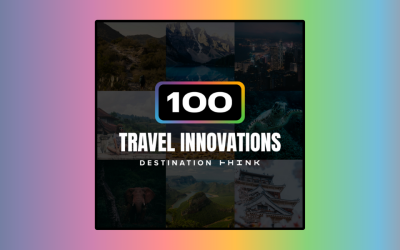Will visitors recommend your destination to their friends?
If you’re not sure, it’s time to find out. Net Promoter Score (NPS) is a critical metric for today’s destinations, built upon one simple survey question: “Would you recommend this (destination, attraction, experience, etc.) to a relative or co-worker?” The resulting data can help destination marketing organizations (DMOs) and their tourism operators find their best promoters while improving visitor experience. At the same time, it encourages collaboration by helping DMOs offer valuable insights to their stakeholders.
What does this survey look like in practice? We asked two strategists from Destination Think, William Bakker and Aaron Nissen, for their insights on how DMOs can implement NPS, and the value it can bring to their destination.
How can destinations create a Net Promoter Score survey?
1) Ask the right questions. “The first step for a destination is to figure out your data model,” says Nissen. “Define the questions you’re going to ask. Ask the bare minimum that you will actually do something with later. Every question needs to be purpose-driven. One of the biggest mistakes I see destinations make is that they ask for data but don’t know how to act on it, so streamline it to be consumer-centric.”
Destinations should ask these questions to collect additional data that will help them segment their audience and draw rich insights:
- Where are you from?
- Age
- Gender
- What’s the purpose of your trip? (business or pleasure)
- “Would you recommend this (destination, attraction, experience, etc.) to a relative or co-worker?” (This is the key NPS question.)
- Why?
2) Build the database. All completed surveys should be collected and sent to a central database that matches the survey you set up in step 1.
3) Deploy the survey. DMOs can ask visitors to fill out the NPS survey at different locations, including visitors centres, at live events and festivals, at airports, or through ambassadors on the streets. Asking the questions online is preferable. Nissen says, “The survey should be accessible to your visitors through a URL, or for your visitor centre to use remotely on tablets. You can also print off the survey and have people manually fill it out, but then someone has to manually enter that into the database.”
Ideally, destinations and attractions will collect the data from visitors as they leave the experience in order to get the most accurate information.
4) Review the data. Once the NPS survey is set up, your DMO can continuously collect valuable information from visitors. How often should a destination review the data? “Most destinations run customer satisfaction surveys once a year but that’s the bare minimum. You should do it do it all the time,” Bakker says.
The ability to track this data in real time as it enters the database makes the data much richer. With more frequent analysis, DMOs can compare NPS scores between seasons, attractions, niches, regions, demographics and more to create a detailed picture of the visitor experience. “This can help you identify areas for growth and investment in order to improve a sector,” says Nissen.
Net Promoter Score brings destination-wide improvement
Setting up this tool requires careful planning and execution. How can destinations gain the most value from their efforts?
Nissen says, ”Some DMOs would just implement the question, find their 70% satisfaction score, report that and call it done. But they would miss the true power of segmentation and data and intelligence – that’s the value of Net Promoter Score.”
The wealth of data can create a win-win scenario for your destination. “If implemented properly, NPS is also a way to work closer with your industry and understand their challenges and work with them through that. So it builds bridges.
“Now, if you can deploy the NPS survey across your whole industry, all the data can be rolled up into one database. The beauty of this is, you can segment the data into clusters broken out by age, demographic, location. And now you have a true consumer segmentation engine that tells you your strongest products.”
Beyond business intelligence, it can improve collaboration. “If you can make Net Promoter Score a collective KPI for your tourism stakeholders,” says Bakker, “it creates something to rally behind and it shifts priorities toward giving people a better experience. It can create a cultural mindshift.”
In addition, the DMO can share valuable insights with their stakeholders that is specific to their own business and also benchmarked against their category. “The key to this is that we’re not measuring NPS only as a DMO. We’re measuring NPS with everybody, together.”
Featured image credit: Andrew Malone, Flickr









0 Comments